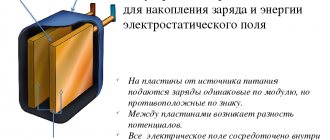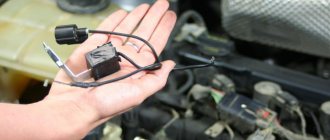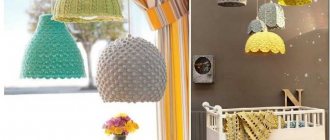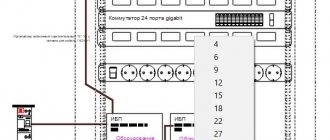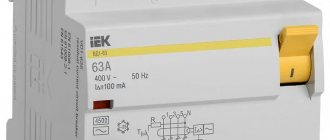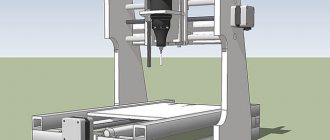“Why explain about such little things - it’s so simple!” - some experienced home craftsman will say, and from his point of view he will be right. Indeed, the task is not the most difficult if you know how to approach it. But, unfortunately, there are also a large number of such new homeowners, especially among recent urban youth, whom their fathers and school taught little in terms of housekeeping. And they have to be instructed even in such seemingly trivial problems.
How to connect a cartridge to wires - a short guide for beginners
By the way, some of them almost flaunt their ignorance and inability - they say, I will always have enough money to call a specialist. This is truly a great position, but with some flaws. Well, firstly, even very wealthy people have severe financial crises - there are countless examples of this. And secondly, you need to find a specialist and wait. Try, say, find an electrician on a holiday evening if your living room light suddenly goes out? You have to be nervous and swear, call and wait tediously... And then the whole thing turns out to be such a trifle that the defect could be eliminated independently within ten to fifteen minutes. You just had to, for example, know how to connect the cartridge to the wires with your own hands...
So learn - sometimes it can be very useful!
What is a cartridge, what functions does it perform?
An electrical system consists of many elements. These are lamps, connection cables and special installations that are necessary to control or communicate different parts. Cartridges are such installations; they perform two important functions:
- Connect the light bulb base to the electrical cable.
- Fix the light bulb in the lighting fixture.
The history of the development of electricity consisted of different stages, but much more convenience was added when the threaded base with a cartridge was invented. The versatility of this connection allows you to use different lamps.
A variety of materials are used in the production of cartridges. This is usually high temperature resistant plastic, metal or ceramic. There are also unique models made from silicone.
Connecting old-style carbolite
Let's start with carbolite ones. This cartridge is collapsible and consists of three parts:
- cylindrical body with thread
- bottom
- ceramic insert with contacts
Most often in our apartments we use cartridges marked:
- E27
- E14
The value in numbers indicates the diameter of the lamp base in millimeters that is suitable for this socket.
The letter “E” indicates that it belongs to the screw series with Edison threads.
There are also pin type, G series and some others presented below.
Such products are designed for a current of no more than 4A. That is, in a 220V network you can connect a load of up to 900W to them.
What parts does the cartridge consist of?
It is a prefabricated structure consisting of several parts. Inside the housing there is also a core, a screw-type clamp, a clamping contact and a thread through which the light bulb is screwed.
Schematic representation of the structure.
Core
For its production, ceramics, plastic or carbolite are usually used. These materials allow the lamps to work, but at the same time, electricity costs remain minimal. Depending on the design of the cartridge, the dimensions of the core and its shape may vary.
Screw clamp
Its main function is to ensure the connection of conductor and terminal parts. They are found in lamps marked O, U, C. In the design of new models, the terminals can be located outside.
Pressure contact
The pressure contact is the contact that is pressed against the metal or semiconductor. It is made from brass. Some products may have two or four plug-in contacts, while in others their function is performed by one spiral.
Thread
It is a necessary element in the design, but can also be different. There are threads designed specifically for use in industrial premises, and there are also household options. There are also models for outdoor installation; they are not afraid of snow, rain and are able to work in difficult conditions.
Threaded connection.
Frame
Modern models of cartridge cases are made of ceramics. This material can withstand high temperatures without melting, deforming or breaking. Also, modern versions have a non-separable design with built-in threads.
Model type E27 made of carbolite.
How to connect a light bulb socket
The rules for installing or connecting an electric cartridge may vary slightly depending on the design features of the device used.
Before independently replacing the socket in a lighting device, electrical safety must be ensured by turning off the circuit breakers in the electrical panel that are responsible for powering the electrical device.
Ordinary electric socket
A significant number of lighting devices operate using conventional sockets, connected in accordance with the following simple recommendations:
- stripping the insulating material from the ends of the wires by about one and a half centimeters;
- fastening the wires on the rear part of the cartridge;
- bending the stripped ends of the wires into small rings into which the terminal screw of the device will fit;
- wrapping the exposed part of the wires with special insulating tape;
- fixing the wires with screws with square spacers on the insulator terminals of the electric cartridge.
At the final stage, the wires are wrapped with insulating tape, which will allow the rear part of the cartridge to be securely fixed, after which the base part is screwed on.
What kind of lighting do you prefer?
Built-in Chandelier
Cartridge with terminals
Terminal cartridges are characterized by an external location of the terminals, so the connection process does not require preliminary disassembly of the device.
Screw terminals or terminal blocks allow quick and easy connection via rivets.
Such devices cannot be repaired, so if they fail, the cartridge must be properly replaced.
Screwless electric
This version of the cartridge is distinguished by a non-separable body with paired holes into which pre-stripped wires are installed. Fixation is carried out by a spring and brass plates, which completely eliminates the loss of wires. The spring-loaded terminal simplifies installation and increases the stability of the structure.
This is the fastest connection method, characterized by a high level of reliability and durability while maintaining operability while maintaining the rated power of the connected lamps.
Operating principle of screw chuck
All components are interconnected, each has its own task. To transmit current, 2 brass contacts, threads, and mounting strips are used. When connected, the contacts touch the lamp base.
Important! According to safety rules, the phase is connected to the central contact of the light bulb base. This will eliminate human contact with the phase.
This diagram is the principle of operation of both models E and G, but the latter differ in their simpler design and the way the current is transferred to the bulb base.
Connection of elements.
What it is
The electric cartridge is a mandatory part in all lamps. It holds the light bulb in place and allows electric current to flow by attaching its components to itself. The task of the electric cartridge is to ensure mechanical strength of the connection and reliable contact.
The important role of the base in conducting electric current into the room
Types of cartridges
There are two main types of lamp sockets on the market today – screw and pin. They differ in design and type of connection, but are universal for different lamps.
Pin
They operate from a network with a voltage of 220 volts and are marked with the Latin letter G. Pin designs are used in spotlights. There are models of different capacities for both production and home use. Pin options may differ in material, dimensions, fastening elements, and the number of contact parts.
Pin element in a suspended ceiling.
Screw
Their design has an internal thread and is used to connect lamps with a threaded base. Most often they use E14 or E27. In addition to the two main ones, there are 6 more varieties of cartridges of this type. An important characteristic is the diameter; the network load and power depend on it.
Screw chuck.
Difference in materials - what light source housings are made of
Everyone has held an incandescent lamp with a metal threaded base many times in their hands, and even often got burned on it, since this type tends to get very hot. Today, metal is used only for this type of light source, developed by Edison, as well as for some pin models. More modern lamps have mostly plastic housings, in particular this applies to type G models.
Modern lamps are produced with plastic housings
A number of bases today are made from ceramic, which is a more durable material than plastic, but not as durable as metal or plastic. However, where vibrations and shocks are not applied to the base, where shaking is excluded, the likelihood of a crack occurring in the once installed lamp body is negligible. There are also glass bases, but they are extremely fragile and therefore are rarely fixed rigidly; they can often be seen in cable models where flexible contacts are removed from the body.
Adapter cartridges
Another, separate type of design. Its functionality can be understood immediately from the name; it allows you to switch from one base option to another. For example, from E14 to E27. This may be necessary during repair work or when purchasing a lamp with a different base.
There are no problems with the operation of the adapters, but it should be taken into account that the structure will lengthen. As a result, the lamp will protrude slightly more than usual. For some lamps this is almost unnoticeable, but for others it greatly spoils the appearance.
Adapter from E27 to E14.
Fastening the electric socket with a bushing
Table lamps and wall lamps have electric sockets that are attached using plastic or metal tubular bushings to parts made of sheet material. This method allows you to expand the capabilities of lamp manufacturing technology. All you need to do is drill a hole and attach the cartridge with a sleeve.
I had to repair these lamps because the plastic was deformed. This was due to the heating of the incandescent lamp. After which the cartridge begins to dangle. I replaced the bushing with a metal one. I took it from a resistor type SP1, SP3. They have a mounting thread M12*1. Please note that the thread may be different. This is because the thread of E27 cartridges does not have a standard. Ammo manufacturers choose threads based on their own considerations. If you decide to use a bushing from a resistor, do not break it until you have checked the threads of the cartridge. It is enough to disassemble the resistor and remove the bushing from the plastic base.
Marking
There are markings on the surface of the cartridges indicating the main characteristics:
- the letter T indicates the standardized temperature;
- amperes (A) indicate current values;
- voltage is measured in volts and marked with the letter B;
- IPXI symbols are printed on the outside of the product, marking the moisture protection of the product.
Additionally, such data as the type of current (for products with a switch), the emblem or name of the manufacturer, and the maximum operating temperature are marked.
Example! The most popular cartridges of types E14, E27 operate at a voltage of 250 V. In the E14 model, the rated current is 2A, and in E27 – up to 4A.
Technical characteristics of E27-FM.
Electrical socket mounting with screwless terminals
The fastening of a cartridge with screwless contact clamps differs from that of a conventional one. This is due to the fact that the body is connected to the bottom using 2 latches.
The bottom is screwed onto a threaded tube located in the chandelier. After this, the wires are inserted into the cartridge. After which the cylindrical body is put on the bottom using latches. The photo shows that the bottom latches are broken. It was in this form that the chandelier came to me. This cartridge can be repaired. This is exactly what we will talk about.
To avoid damaging the wires when removing the cartridge, take a screwdriver and move the latches to the sides. The body is freed from the bottom.
The photo shows a cartridge with screwless clamps. It was installed during the renovation of the chandelier. This cartridge performs the function of fastening, fixing the cup to which the glass shade is attached.
Advantages and disadvantages of popular types of cartridges
Most often, products made of carbolite and ceramics are presented on the market. To understand the nuances of operation, you need to study the main advantages and disadvantages of such cartridges.
Main advantages
Availability. Products made from these materials are widely represented in specialized sales outlets; the price is low, so you can replace a failed product at any time.
Range. Different sizes of sockets for lighting lamps are made from ceramics and carbolite. You can choose the option you need or even buy an adapter.
Work at high temperatures. At high temperatures, materials retain their properties and there will be no deformation or melting.
Flaws
Low quality. The low price also affects the quality of the products.
Fragility. Together with relatively low quality, this often leads to breakdowns.
Quality of contacts. In inexpensive models, they are made of ordinary metal, which becomes covered with rust during use, which, in turn, worsens the connection and increases heating. To prevent the element from malfunctioning, the contacts will have to be cleaned regularly.
Replacing a socket in a chandelier
In order to change the socket in the chandelier yourself, consider the instructions on how to change the sockets in the chandelier. First of all, you need to turn off the electricity at the power supply panel. DO NOT perform work under voltage. To change the socket on a chandelier and connect it, you need to understand the assembly of the product.
First, remove the jewelry from the chandelier, any glass pendants, if any. Then, on the outer side of the sockets there is a threaded part with a fastening nut, with the help of which the socket is fixed to the chandelier. Unscrew this nut and free the chandelier from the socket and unscrew the wires from the terminal blocks.
All cartridges have been removed. This is one of the ways to remove chandelier holders, which the manufacturer has provided so that when replacing, you do not have to disconnect the chandelier from the ceiling.
Another method for chandeliers, lamps that need to be disconnected from the ceiling when replacing the socket. Unscrew the camouflage cap, which is fastened in different ways. Either with a locking screw or nut that covers all connected wires under the ceiling. Then disconnect the wires from each other, and isolate the wire that goes from the switch to the chandelier. Remove the light fixture from the hook or strip attached to the ceiling. And you can start replacing the cartridge or repairing it.
Nuances of proper installation
According to the standard, the socket is attached to the lamp through the bottom, in which there is a hole, through which the electrical wire is routed. But there are also non-standard designs with their own connection nuances.
It will be useful to read: Connecting the cartridge.
Connecting with wires
You cannot create a direct connection between the cartridge and the cable. Firstly, the cartridge must be securely fixed in the structure of the lamp, and secondly, a plastic sleeve with a hole for the wire is added to the structure. A plastic screw is attached to this sleeve to secure it in place.
Wired connection.
Errors during installation and operation
At the end, we will briefly summarize and make a selection of common mistakes that you should avoid when connecting and servicing a light bulb socket.
1Connecting the phase conductor to the threaded part of the base.
How it all ends was described in detail above.
2Do not forget to tighten the screws that secure the contact plates to the ceramic liner at the very beginning.
You can solder all the wires super securely, but if these screws are loose, then heating of the connection is still inevitable.
3Connecting multi-core wires without soldering or tinning.
4Connecting phase and zero to two adjacent contacts of the keyless chuck and creating a short circuit.
5 Squeeze-adjust the central plate in the carbolite cartridge when bending it, using a non-insulated tool.
Types by type of socles
Electric cartridges can be divided according to the type of base. There are two large groups - threaded and pin devices.
Sockets with threads on the inside are suitable for bulbs with a threaded base. They are marked E14, E27 and others, where E indicates the method of fixation (thread), and the number indicates the diameter. The following 8 standard sizes are standard: E5, E10, E14, E12, E17, E26, E27, E40. To install the light source, you need to screw it on.
Pin models are designated by the letter G. The number after the letter indicates the distance between the pins in mm. With a four-pin connection, the number indicates the distance between opposite holes. Such devices are used in spotlights for suspended and suspended ceilings. Products with pins are divided according to the body material, liner material, type of fastening, distance and number of contacts.
There are U-shaped lamps and cylindrical ones. Electric chucks marked GX23, 2G7 and others are used for them. They differ in the number of contacts.
What kind of base do regular light bulbs have?
The most common incandescent lamps in everyday life have a threaded base, marked with the letter “E”. The number following the letter determines the diameter of the part included in the cartridge. The higher the value, the wider the base. If you buy a light bulb with a larger or smaller diameter, the lighting element will not fit the socket.
A threaded base does not guarantee that the light bulb is intended for household use. It's all about the diameter. The threaded parts included in the cartridge are available in the following types:
- micro base E5;
- miniature E10;
- small E12;
- "minion" E14;
- medium E27;
- big E40.
The number in the marking indicates the diameter size in millimeters. Along with the above, there are threaded sockets in sizes 17, 26, 39 mm.
Each type has its own characteristic features and area of application, but they are all designated by the letter E in honor of Edison. There are two types of light bulbs used in everyday life: E14 and E27. Lighting elements with a large Edison base (40) are also available on the domestic market, but they are intended for industrial and street lighting.
Characteristics
Although the lamps may have the same bulb, the type of base may be different. There are different types of lamp sockets. The marking is presented according to a single international standard and includes Latin letters and numbers. The letters are the shape, and the numbers are the threaded diameter with the dimensions of the body. Sometimes it is also the contact distance. The most common bases are E14, E27 and E40. There are also G4, G5, G9, G10 and R7S. E14 is a household model, common in LED and energy-saving lamps. Often used in incandescent lamps. They can be classic or candle-shaped.
- E27 is the model used in all types of light bulbs. It differs from the first in the large amount of power and the lack of combination with a dimmer and electronic switch.
- E40 is a large base used in economical mercury lamps, powerful incandescent models, and metal halide sources. It is used to illuminate large areas, for example, highways, squares, squares and streets.
- G4 is a cartridge that is predominantly used in halogen light sources and has a small size with a point emission.
Note! Used to decorate living spaces with decorative lighting
- G5 is a model used in luminescent installations, where the bulb thickness is 16 mm. The lamps have low power consumption, high luminous efficiency and cool light.
- G9 is a cartridge with a structure used in decorative lighting networks, where the voltage is 220 volts. The flask is made in the form of a matte or transparent capsule.
- G10 is a model that is used in lamps that have diode, halogen and energy-saving purposes. Works in a network where the voltage is no more than 220 watts. Has a rotating mechanism.
- R7S is a cartridge common in everyday life, industry and commerce. There are even floodlights. It features increased color rendering and luminous efficiency. Works in closed type bulbs.
Technical characteristics of standard pin sockets




